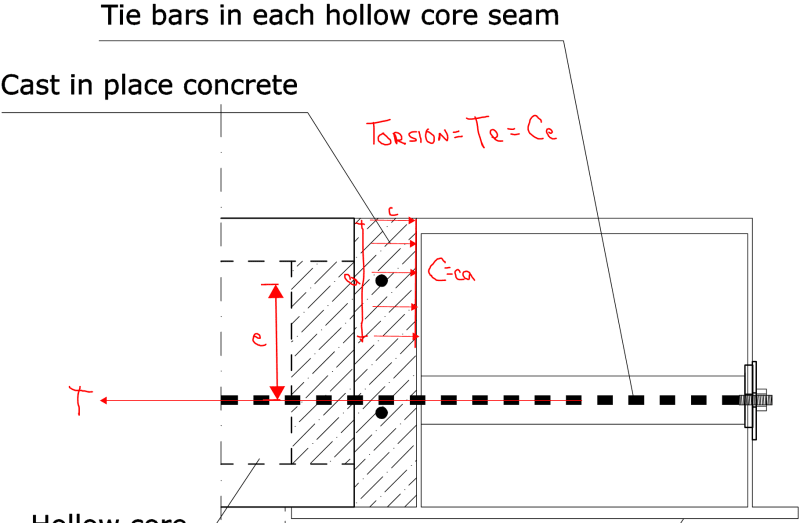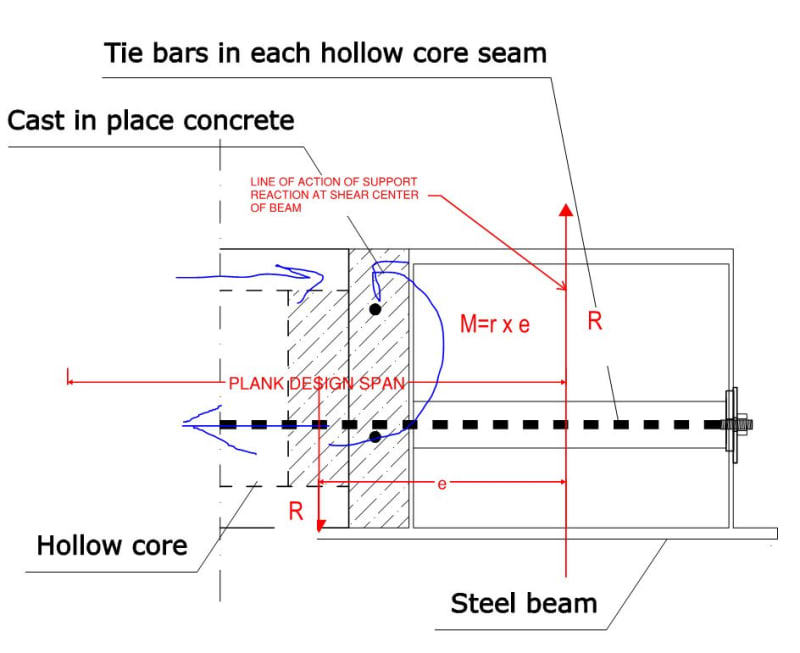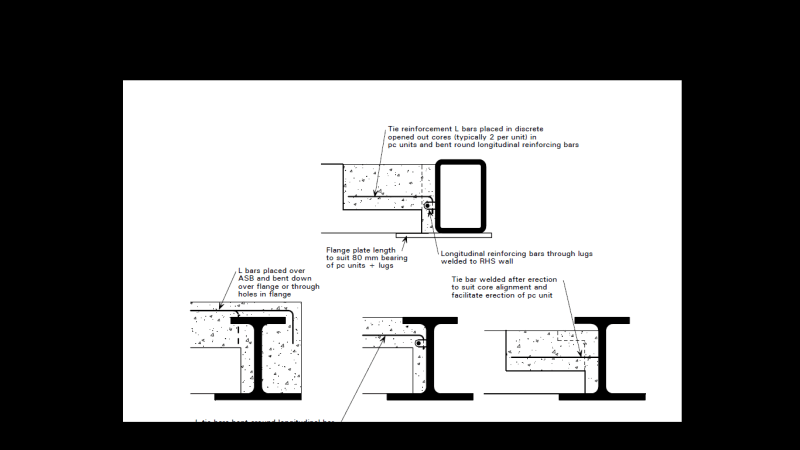Aakalim103
Structural
- Jan 26, 2019
- 26
Hello all,
We frequently have WQ steel beams supporting hollow core slab floors. For the edge beams where there is significant torsion, we consider that the WQ beam are not capable of taking any torsion and tie the beam to the floor using rebars that are anchored in the hollow core seams on one end and either bolted or welded to the beam web on the other end. This essentially ties the beam to the floor and prevents excessive rotations. I have shown this in the figure attached.
Does anyone have any idea how should i size my rebar for a given amount of torsion?
We frequently have WQ steel beams supporting hollow core slab floors. For the edge beams where there is significant torsion, we consider that the WQ beam are not capable of taking any torsion and tie the beam to the floor using rebars that are anchored in the hollow core seams on one end and either bolted or welded to the beam web on the other end. This essentially ties the beam to the floor and prevents excessive rotations. I have shown this in the figure attached.
Does anyone have any idea how should i size my rebar for a given amount of torsion?



